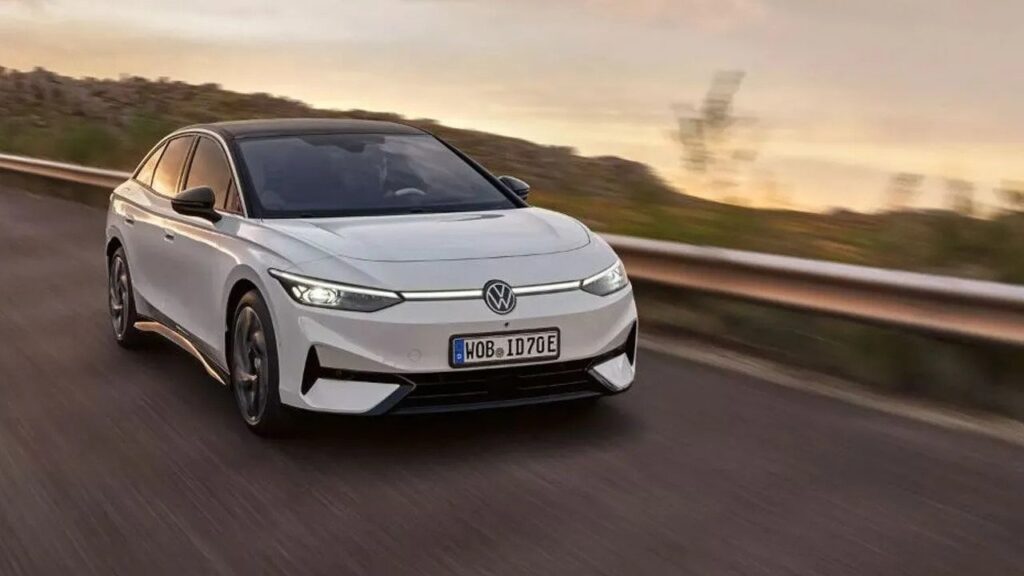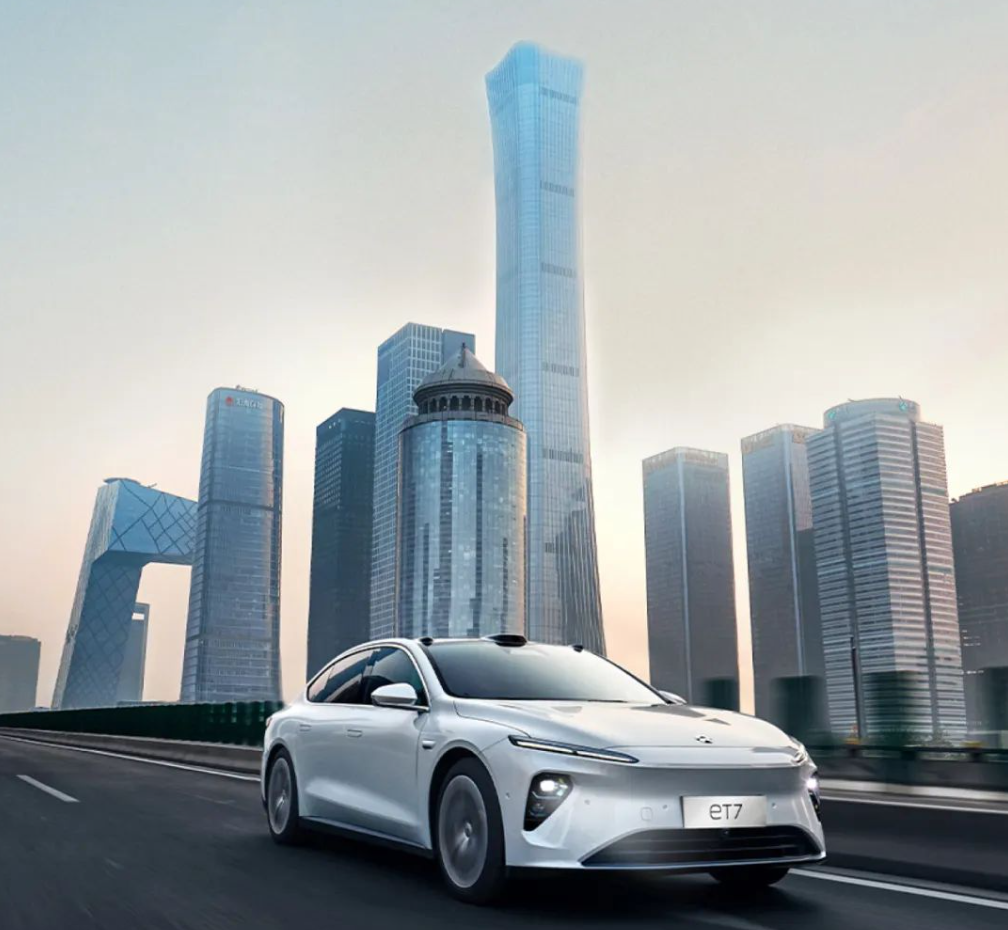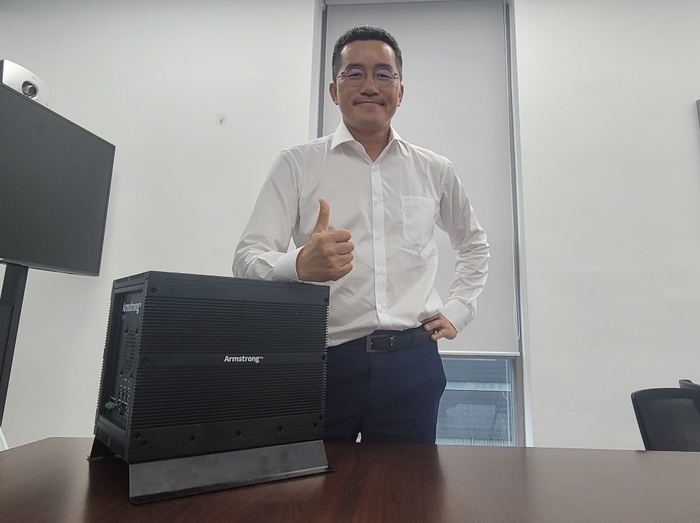
Vueron Newsletter
No. 31
2023.07.18
| Volkswagen Commercial Vehicles First Self-Driving Test to be Conducted in Munich, Germany | ||
| NIO’s NOP+ feature goes live on roads within 5th Ring Road in Beijing | ||
| Mars Auto reaches 700,000 kilometers of autonomous truck driving… longest in Korea | ||
| SWM launches 1000TOPS-class ‘AP 500’… The era of Korea autonomous vehicles is ‘coming to an end’ |
1. Volkswagen Commercial Vehicles First Self-Driving Test to be Conducted in Munich, Germany
-
- Volkswagen Commercial Vehicles has announced the readiness of their self-driving car, the Volkswagen ID. Buzz AD, for mass production.
- The car will undergo its first on-road test, with important figures from politics, business, and media invited to witness its performance.
- The vehicles will be equipped with both Radar and Lidar technology for enhanced autonomous capabilities.
- Volkswagen has initiated an autonomous driving test program in Austin, Texas, focusing on commercial applications for shared mobility and transportation services in European and North American cities.
- Christian Senger, responsible for autonomous driving development at Volkswagen Commercial Vehicles, is enthusiastic about expanding their self-driving program to North America, which is the result of long-term investment.
- Initially, Volkswagen planned to utilize another company’s technology for their self-driving ID Buzz but has now partnered with Mobileye and taken the development in-house.
- Over the next three years, the self-driving cars will be tested in Austin and four other U.S. cities, with a target of launching a driverless taxi service by 2026.
- Once ready for production, Volkswagen plans to increase the production numbers to meet the growing demand from customers.

The decision to develop their own technology in collaboration with Mobileye showcases Volkswagen’s dedication to internalizing the development process and shaping the future of transportation. The planned testing phase in multiple U.S. cities and the target of launching a driverless taxi service by 2026 indicate Volkswagen’s ambitious timeline for commercial deployment.
2. NIO’s NOP+ feature goes live on roads within 5th Ring Road in Beijing
-
- NIO’s Navigation on Pilot Plus (NOP+) feature now covers highways and urban expressways within the 5th Ring Road in Beijing, providing seamless and convenient navigation.
- The coverage includes the 2nd, 3rd, 4th, and 5th Ring Roads, expressways, and highways in Beijing.
- The update is cloud-based and does not require a software OTA upgrade or manual operation for users to access the latest road coverage.
- NOP+ assists users in various driving tasks, such as entering and exiting ramps, selecting lanes, overtaking slow vehicles, and adjusting speed according to speed limits.
- The Banyan 2.0.0 version upgrade enhances NOP+ capabilities with improved perception capabilities, dynamic simulation display, and a new rule-based control model.
- NIO offers free NOP+ access to new vehicle buyers based on specific conditions and timelines for different vehicle models.

The cloud-based update system demonstrates NIO’s commitment to delivering seamless and effortless software upgrades to its users. Offering free access to NOP+ for new vehicle buyers is a strategic move to attract customers and enhance the value proposition of NIO’s vehicles.
3. California senators advance bill restricting driverless trucks
-
- Members of California’s Senate Transportation Committee advanced a proposed, sweeping law known as Assembly Bill 316 that could require heavy-duty autonomous trucks to keep a safety operator in the vehicle throughout this decade.
- The bill would restrict autonomous vehicles weighing 10,001 pounds or more. Under the measure, the Department of Motor Vehicles have to submit a policy report by Jan. 1, 2029, or five years after testing.
- A legislative oversight hearing would follow, and the DMV couldn’t issue a permit until one year later, provided there’s legislative approval.
- The proposal, which previously passed in the California State Assembly, now goes before the Senate Appropriations Committee.

The proposed law reflects the cautious approach of California lawmakers toward autonomous trucking technology, prioritizing safety by mandating the presence of a human operator. Requiring a safety operator in heavy-duty autonomous trucks acknowledges the unique challenges and potential risks associated with these larger vehicles.
4. Mars Auto reaches 700,000 kilometers of autonomous truck driving… longest in Korea
-
- MARS AUTO, a truck autonomous driving startup, achieved over 700,000 kilometers of cumulative autonomous driving distance for heavy-duty trucks in the first half of this year.
- The company demonstrated autonomous trucks equipped with their autonomous driving system, MARS PILOT, on trunk routes of 3,000 kilometers round trip daily, marking the longest autonomous driving demonstration distance in Korea.
- Collecting a larger demonstration mileage allows for the acquisition of more diverse and abundant data, contributing to stable autonomous driving.
- MARS AUTO aims to collect over 1 million kilometers of autonomous driving data by the end of the year.
- MARS AUTO enables live streaming of a truck traveling 534 kilometers a day from Sejong to Busan in autonomous driving, showcasing their technology’s capabilities directly on their official website.
- In August, MARS AUTO will start providing autonomous transportation services to the Army’s Military Research Command, particularly for transporting army munitions.
- MARS AUTO plans to showcase differentiated mileage and performance in the US market in the second half of the year.

MARS AUTO’s accomplishment of surpassing 700,000 kilometers of autonomous driving distance demonstrates the progress and capabilities of their autonomous driving system in heavy-duty trucks. The partnership with the Army’s Military Research Command for autonomous transportation services further highlights the potential applications of autonomous driving in military operations.
5. SWM launches 1000TOPS-class ‘AP 500’… The era of Korea autonomous vehicles is ‘coming to an end’
-
- SWM has introduced the AP-500, an AI autonomous driving system that achieves 1000TOPS (terabytes of operations per second), enabling level 4 autonomous driving in Korea.
- The AP-500 is an AI computer optimized for autonomous driving, equipped with Intel’s latest CPU Xeon-D processor, providing high-speed computation and data processing performance.
- Despite its supercomputer-like performance, the AP-500 has a small form factor comparable to a standard personal computer.
- The AP-500 incorporates lightweight sensor-fusion object recognition technology, enabling integration into autonomous vehicles.
- SWM’s autonomous vehicles feature multiple cameras, lidars, radars, microphones, and ultrasonic sensors, with the AP-500 fusing the data from these sensors for decision-making and control.
- The AP-500 applies advanced AI algorithms, including 3D multi-object tracking, to improve prediction accuracy and identify objects and vehicles up to 150 meters away.
- The AP-500 is power-efficient and reduces footprint and power consumption compared to multiple industrial PCs used in autonomous vehicles.
- SWM has conducted autonomous paid transportation services in pilot districts, demonstrating the safety of their technology.
- The company plans to customize its sales strategy, diversify its product lineup, and collaborate with Intel distributor Crossgen to supply autonomous driving systems.
- SWM aims to contribute to the development of the domestic and global autonomous driving industry and ecosystem.

The AP-500 represents a significant advancement in AI autonomous driving systems in Korea, enabling level 4 autonomous driving, where the vehicle can drive from a specific area in the city center to the passenger’s desired destination. The company’s plans for customization, product diversification, and collaboration with Crossgen indicate a proactive approach to meeting market demands and expanding their presence in the autonomous driving industry.
*Contents above are the opinion of ChatGPT, not an individual nor company

